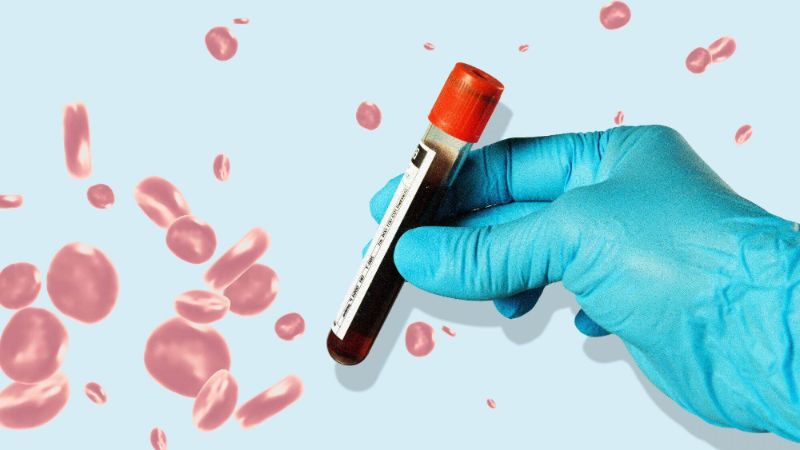Find Out All You Need to Know about the Hemogram Test
Aug 19, 2022

At times, something as simple as a blood test can reveal a lot about one’s overall health. In fact, there are several types of tests that require only a small sample of blood but can offer doctors a comprehensive look into one’s organ health and function and help them screen for a number of disorders and diseases. One of the most common and elementary blood tests that a doctor may prescribe is the hemogram test.
What is the Hemogram Test?
Also known as the complete hemogram test, this is a panel that checks for changes in blood and provides information about the levels of the different types of cells in the blood. Including a number of tests, the complete hemogram measures the number of red blood cells, white blood cells, and platelets in a blood sample, certain abnormalities in the levels of which can help detect health problems, infections, or diseases. This test is performed to assess the overall health of an individual and helps in the detection of issues like anaemia, various infections, and leukaemia.
Understanding the Components Being Measured in a Hemogram
A hemogram performs a red and white blood cell count, along with measuring the number of platelets in the blood. It also calculates the haemoglobin and erythrocyte sedimentation rate (ESR) for a blood sample. Here’s more about these components as well as their functions:
- Red Blood Cells (RBCs) are responsible for carrying oxygen from the lungs to the rest of the body. Normal RBC range varies for men and women and may also vary based on several other factors.
- White Blood Cells (WBCs) are available in various types and help the body fight infection. The normal range for WBCs may vary between different labs.
- Platelets help in blood clot formation in the body. Platelet count should normally range between 150,000 and 450,000 platelets/mL of blood.
- Haemoglobin is a protein found in RBCs which contains iron. It forms a reversible bond with oxygen, helping the RBCs carry it to different body parts and also aids the production
 of bilirubin and of new RBCs in the bone marrow (Hb).
of bilirubin and of new RBCs in the bone marrow (Hb). - ESR is the rate at which RBCs in an anticoagulated blood sample settle at the bottom, through plasma, over the period of an hour.
A hemogram also includes the calculation of several related values like the haematocrit, which is the proportion of RBCs to the total volume of blood.
Is the Hemogram and CBC Diagnostic Test the Same?
While many people tend to consider a Complete Blood Count (CBC) and the complete hemogram test to be the same, there are certain factors that differentiate between the two. All the tests for blood cell count that come under a CBC are also included in a hemogram, but the main difference lies in the fact that a hemogram test report also includes an ESR and a peripheral smear, for a more comprehensive overview of one’s overall health.
Here, the peripheral smear involves a microscopic examination of a blood sample to check the functional status of bone marrow, while the ESR helps in the detection of inflammation in the body.
The Purpose of a Hemogram
A hemogram may be prescribed for a variety of reasons, including:
- Overall health assessment: The test forms an important part of regular health checks for providing a complete picture of one’s health. It helps in identifying potential health issues as well.
- Diagnosis: There are various conditions, the symptoms of which may lead to the prescription of a hemogram, to help the doctor’s diagnosis.
- Monitoring a Treatment: Hemogram tests can also help doctors monitor the efficacy of particular treatment plans.
- Monitoring Overall Health: This test is also recommended to people who may be suffering from a condition that affects the blood.
What Do Hemogram Results Indicate?
There may be several reasons why one’s hemogram results do not fall in the normal range.
- Low levels of RBCs, haematocrit, or haemoglobin may indicate diseases like anaemia, cardiovascular issues, or a lack of iron in the body, while high RBC counts may indicate dehydration, or diseases like polycythaemia vera.
- Low levels of WBCs may indicate an autoimmune or bone marrow disorder, while high levels may be a sign of the body reacting to medication or infection.
- A low ESR may be caused by leucocytosis or sickle cell anaemia, while a high ESR may be the result of an infection, rheumatoid arthritis, kidney diseases, or certain cancers.
However, abnormal results may not always denote the presence of a serious medical condition, as one’s diet, physical activity, medication, menstruation, and other factors may also affect the levels of these components. That is why it is always recommended that one visit a doctor with their test results for a proper diagnosis.
Getting Ready for the Test
Generally, there are no specific preparations or precautions that a person has to take before this test. However, it is always best to be open and honest about one’s health, the medication they are on, etc. to the doctor, who can suggest if any precautions are required
The complete hemogram test is a very commonly prescribed blood test that helps detect the presence of infections or illnesses and is a part of regular health checks as well.
Related Blog Post
Blog Categories
- Child Health
- Mens Health
- Women's Health
- Mental Health
- Health Myths & Facts
- Fitness
- Nutrition/Recipes
- Remedies
- Weight Management
- Stress Management
- Health Supplements
- Addiction Management
- Disease Management
- Allergy
- Anemia
- Arthritis
- Asthma
- Autoimmune Diseases
- Blood Pressure
- Cancer
- Deficiencies
- Dengue/Malaria/Chikungunya
- Diabetes
- Eye Problems
- Heart Diseases
- Hepatitis
- HIV/AIDS/STD
- Hormonal Imbalance
- Infection/Flu/Viral
- Kidney
- Liver
- Menstrual Problems
- Pregnancy
- Skin & Hair Problems
- Stomach Ailments
- Thyroid
- Others
- Health Checkups
- Diagnostics/Pathology
- Lifestyle & Wellness
- Covid
- Medical Tests
- Cholesterol
- Health Tips
- Parent Care/Old Age
- Lungs
- Food Intolerance







